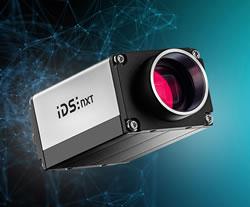Robotics industry will be worth $218 billion in 2030, forecasts GlobalData
Against this backdrop, the robotics industry is projected to grow at a compound annual growth rate (CAGR) of 14% from $76 billion in 2023 to $218 billion in 2030, forecasts GlobalData, a leading data and analytics company.
Robots have been around for many years, primarily in industrial settings. However, the recent technological breakthroughs are set to unleash their full potential. Against this backdrop, the robotics industry is projected to grow at a compound annual growth rate (CAGR) of 14% from $76 billion in 2023 to $218 billion in 2030, forecasts GlobalData, a leading data and analytics company.
AI and cloud computing
Cloud computing and artificial intelligence (AI) are integral to the development of intelligent industrial and service robots, which can anticipate and adapt to situations based on the interpretation of data derived from an array of sensors (e.g., 3D cameras, lidar scanners, ultrasound transmitters, force sensors, and obstacle detectors). Using AI, robots can make decisions independently, move autonomously, and navigate, albeit with restrictions.
Carolina Pinto, Thematic Intelligence Analyst at GlobalData, comments: "Today, service robots are more of a novelty toy than a useful tool. Care robots that are designed to alleviate staff shortages in hospitals and care homes tend to create more (rather than less) work for staff who must move, clean, and monitor the robots. AI and cloud technologies will help unlock the full potential of robots, turning these robots into autonomous machines."
Humanoid robots: From fiction to investment and practical use
Science fiction often speculates about robots that are virtually indistinguishable from humans. Humanoid robots resemble the human body, with a torso, a head, two arms, and two legs. They are multi-purpose robots that can perform tasks in ways that mimic human actions. Humanoid enthusiasts emphasize the necessity of these robots to address growing labor shortages in developed economies and replace human labor in dangerous environments.
Humanoid robot startups, including Figure AI, UBtech Robotics, and 1X Technologies, received over $1 billion in private investment in 2024. Yet, the most popular consumer robot is still a vacuum cleaner shaped like a disc.
Pinto concludes: "Humanoid robots hold a lot of potential, but it will take a decade to reach mass production. More advancements in autonomous navigation and communication are required and the hardware must become significantly cheaper if the purpose of humanoids is to replace human labor.
"In factories and warehouses, human staff already work alongside robots that are incredibly good at performing repetitive and dangerous tasks but do not look or behave like humans. It is unclear whether humanoids will be a better fit than existing non-humanoid robots in manufacturing, healthcare, hospitality, and foodservice settings."
Featured Product

3D Vision: Ensenso B now also available as a mono version!
This compact 3D camera series combines a very short working distance, a large field of view and a high depth of field - perfect for bin picking applications. With its ability to capture multiple objects over a large area, it can help robots empty containers more efficiently. Now available from IDS Imaging Development Systems. In the color version of the Ensenso B, the stereo system is equipped with two RGB image sensors. This saves additional sensors and reduces installation space and hardware costs. Now, you can also choose your model to be equipped with two 5 MP mono sensors, achieving impressively high spatial precision. With enhanced sharpness and accuracy, you can tackle applications where absolute precision is essential. The great strength of the Ensenso B lies in the very precise detection of objects at close range. It offers a wide field of view and an impressively high depth of field. This means that the area in which an object is in focus is unusually large. At a distance of 30 centimetres between the camera and the object, the Z-accuracy is approx. 0.1 millimetres. The maximum working distance is 2 meters. This 3D camera series complies with protection class IP65/67 and is ideal for use in industrial environments.
